October 2008
Galapagos Islands
Or… Don’t Step on that Rock! It's a Baby Sea Lion!
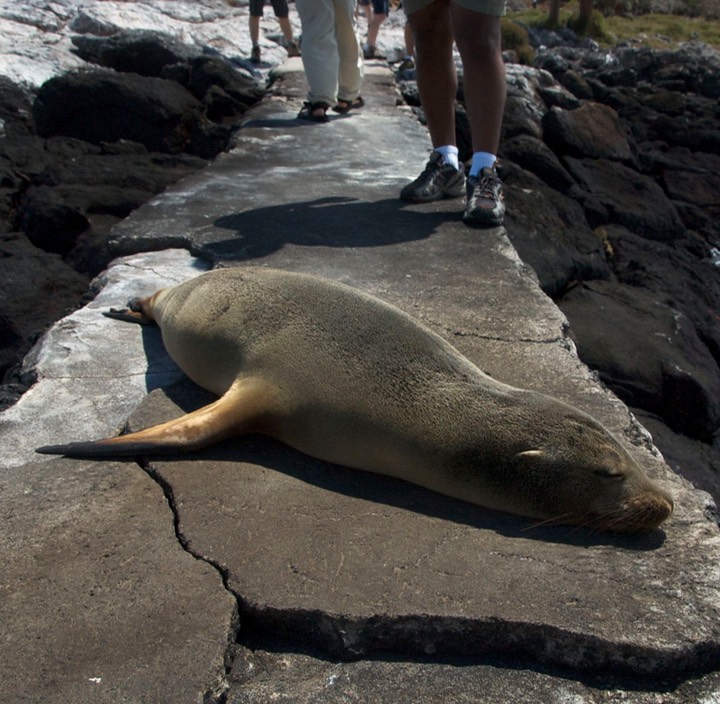
The Galapagos Islands are truly one of nature’s wonders. What can we say that hasn’t already been said bunches of times? It’s an incredible adventure, a chance to see critters you’ll not see elsewhere, a chance to trip over yourself avoiding stepping on a baby sea lion gazing up at you lovingly. For us it also was an opportunity to be pampered and taken care of, with food available at all hours; interesting people from foreign countries to get to know and enjoy; a really fun boat ride that lasted a whole week; and resulted in the tan of a lifetime (sorry, Dr. Fishman).
So, what was the big deal, you say? All right, already; we’ll tell you all about it.
To begin with, we had to run like crazy to get to the boat on time. It was our own fault. To keep the story short – we had originally intended to go to the Islands next spring. But the costs were going up (natch), dramatically enough to get our attention. It would have been simplest, and cheapest, to go while we were still in Ecuador. But it wasn’t a good time of year – cold and choppy water; they pull the boat out of the water for maintenance. Next soonest time was end of September. So that’s what we decided on. But by then we would no longer be in Ecuador. Would the time we were allotting to get to Lima (the logical place from which to fly back to Ecuador) be enough to allow us to see northern Peru? Sure, of course, why not, who can say?.
Well, it wasn’t. We worked hard at it, trying to keep moving and seeing what we most liked and not skipping too much. We figured we needed to get to Lima on Wednesday so we could get some computer stuff done (and pack!) before we flew to Guayaquil, Ecuador on Friday morning. We weren’t flying to the Islands until Sunday morning, but the travel person said the flights were iffy and we needed an extra day to make sure we could catch the Guayaquil hop. It all happened, but we were whupped. And then, Sunday morning, we flew into the Galapagos Islands, and figured we could relax for a week. Welllll …. I’m not sure “relax” was what we did most of.
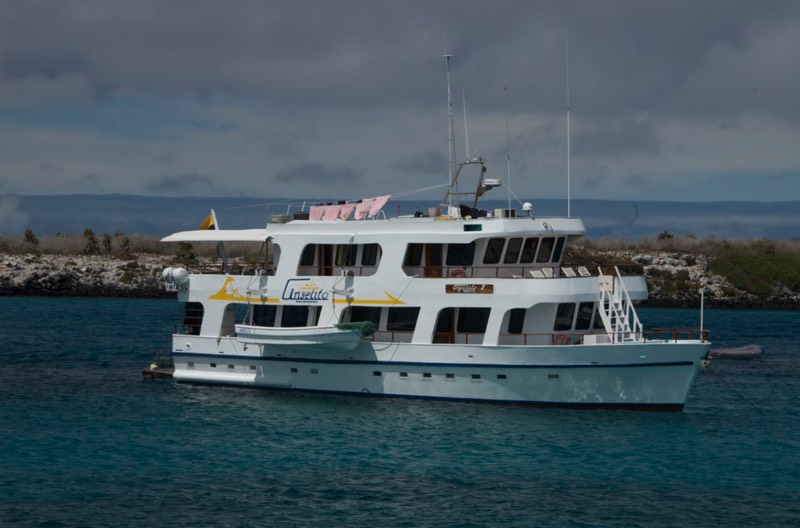
There are several ways to see the Islands, all with points in their favor. Many folks simply arrive, stay in a hostel, and make arrangements for day trips for as long as they can stay. But we had heard, and thought highly of, the idea of staying on board a boat for the duration of our visit.
So, upon arrival, we were picked up and taken to our home for the next week, the Angelito I, a 16-passenger cruiser with a crew of 7 plus our guide, Diego. The boat (ship?) was simply great. We heartily recommend you check out their website – www.angelitogalapagos.com. We had an upper-deck small stateroom with private bath and shower. (Others might have been feeling cramped – although no one said so - but our quarters weren’t much smaller than being at home in La Tortuga.) Everything was clean and neat and “shipshape” (duh).
On arrival, we were requested to take off our shoes; for the next week we were either barefoot or in socks, except when we went trekking on shore. After all the dunnage was aboard, we took off from the dock and then were immediately fed lunch. And then, after that, we were fed about every four hours, tons of food (which everyone snatched up and devoured like feeding time at the zoo), either regular meals or snacks in between. For a whole week. The cook was at it simply all the time! Always coffee and water and cold drinks available. And a bowl of candy. Life doesn’t get much better. Except, of course, for Rick. Now Rick is a special case. All of you who know him well are aware that he has food issues, lots of them. He lost some weight over the week. Kathy, who is an equal-opportunity forager, ate most of what Rick left on his plate.
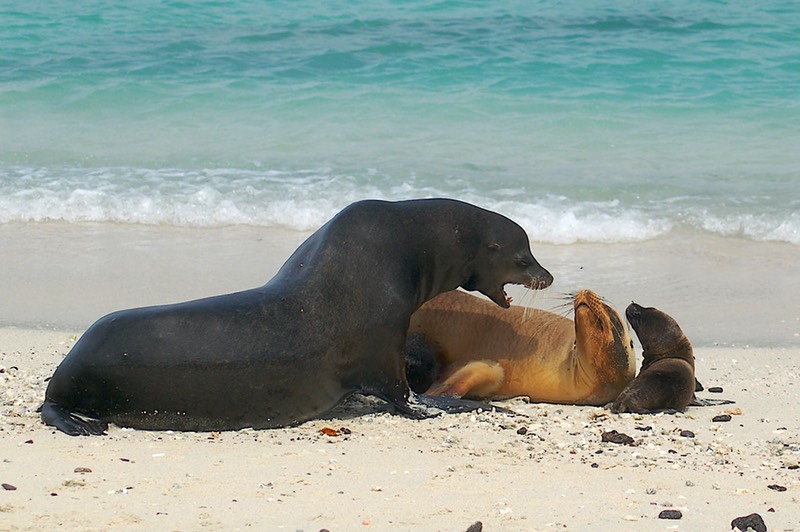
The food was European in flavor and presentation. Why? I know you are dying to ask. With good reason. The owners of the boat are local, not European at all. The travel agency who booked our trip, and who does all the bookings for the Angelito, is in Quito, Ecuador; but, one of the owners is Italian and the other Swiss. That’s part of it. But more than that, most of the passengers usually are European. This seems to be because travelers talk to each other, and somehow this seems to be a boat the Europeans like. That was the only reason we could figure out.
Food aside, this international flavor added immeasurably to our experience. We were surrounded for a whole week by Swiss, Germans, Swedes, and Hollanders, with a stray Canadian and two Israelis thrown in for good measure. We had wonderful conversations with all of them, learned bunches of things about them and their countries, and made a whole slew of new friends. Everyone spoke English when we were part of the conversation, except the German couple, who only knew a few words; so we were included in the conversation as much as possible. Then, among themselves, the words would fly back and forth, usually in German, of which we could only pick up a smidgeon in passing. It was exhilarating! I will say, as a side comment, that it was awfully nice for us to be able to speak English for an entire week, and always be understood! We are really enjoying being in Latin America, but sometimes the desire is overwhelming to just babble away and really know the other person has gotten your point.
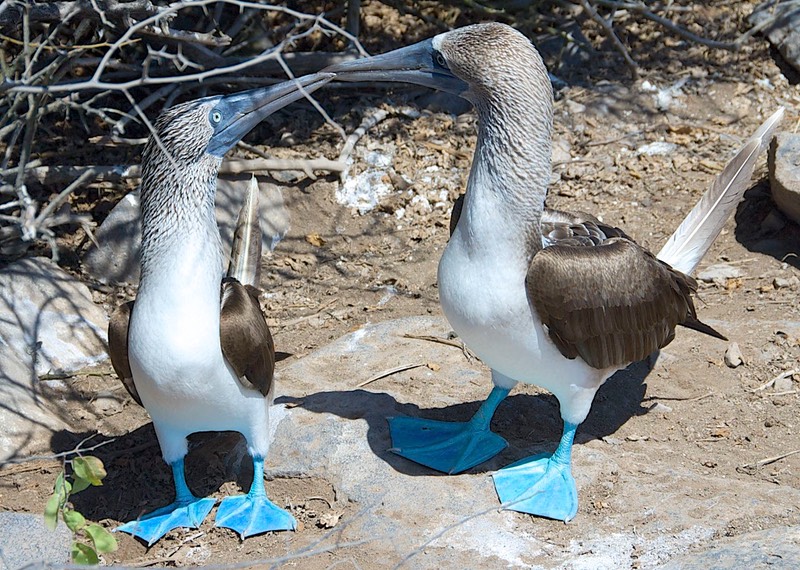
Oh? You say enough about the people, what did you get to see? Hey, we saw it all! Over the week we got chummy with land tortoises and sea turtles; basked with sea lions and sea bears (fur seals); stepped around boobies galore (blue-footed, red-footed and masked); tripped over baby albatrosses (almost tripped, anyway); crunched through red and black and white mangroves; ducked as brown pelicans flew overhead, and later saw their babies on their nests; got stuck by prickly-pear cactus; watched a hawk eat an iguana – oops, forgot to mention the iguanas, both land and marine, and absolutely everywhere - confirmed that there are more lava lizards than people in the Islands; saw frigates stealing food from boobies; all that in one week.
And there’s more… the Darwin finches, the owls, a special penguin (lousy pictures because they only roost when it’s starting to get dark), beautiful red billed tropicbirds with long graceful tails. And then on the last morning we got up really early (panga left at 6:00 am) to go out into the mangrove lagoon. And it was splendid; we saw marine turtles mating – it lasts about 4 hours and the male has to keep fighting off other males as well as attending to business, all this in the water of course; it’s a wonder they are successful at all! There were also sharks, manta- and sting-rays and tons of fish in water so clear you could see all their colors. That was a special treat, but, again, a little dark and overcast for good pictures.
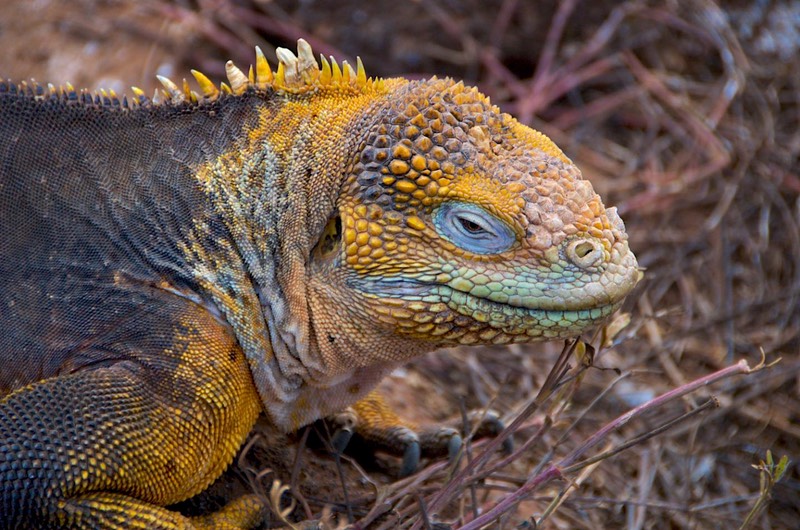
Another special moment was late one afternoon when we were making for our next island and we were joined by a group (pod?) of bottlenose dolphins. They swam beside us for a long time, jumping and diving and going under the bow of the boat. One jumped up almost high enough to land on the deck. Another afternoon some folks saw a whale, but not us.
But the iguanas you ask? Lord yes, too many iguanas to count. Land iguanas, marine iguanas, a hybrid of the two, immature ones, huge old ones; you want iguanas, we’ll give you iguanas. And yes, they really are way cool.
Each day had a plan. Typically, we took two walks, morning and afternoon. In between, there was snorkeling. Now Rick and I aren’t snorkelers and the water is a bit cold in this season, so we tended to watch from above. So we missed some chances to play Lucca Brazzi (“Lucca Brazzi swims with the fishes”). But several of the folks had underwater cameras, and they were delighted to share their experiences. Sometimes they snorkeled from the boat, but often it was from a beach, and then we would troop ashore with them. Swimming in the surf was great; so was just sitting in the sand and enjoying the day.
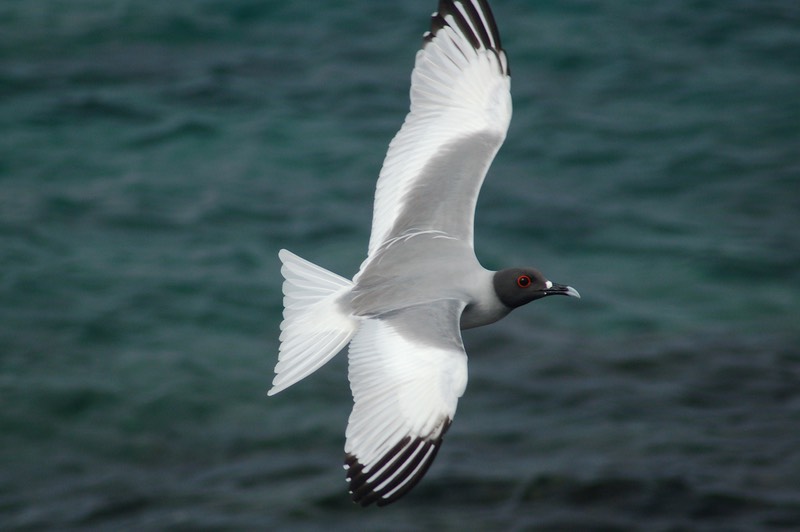
The walks were organized to show us the features of a particular bay, or part of an island, or maybe the nesting place of a certain critter. They weren’t difficult, and the guide always left tons of time for pictures while he filled us in on what was important and/or interesting. By the end of the week, of course, he was commenting that it was against the law to take more than 50 pictures of any given bird, and that at the airport they would be checking to see how many filled memory chips we had with us and take away some if we had too many. Just kidding, of course; Diego was born in the islands and has been doing this for 29 years; he has the patience of Job.
For the most part the sailing (motoring, actually) was just great. We visited several islands in the archipelago, and traveled between them. Usually the water was pretty calm. We did travel out to two distant islands (Genovese and Espanola, for those of you who have been); these both required several hours in each direction, which we did during the night so we would be at our destination when we were ready to start the new day. These trips were more rugged. The water was rougher and the trips lasted for 6-7 hours; it was difficult to sleep. The first time I kept hold of the edge of the bunk all night, sure I was going to tumble out any minute. Later in the week I became more blasé. On the days after, there were sleepy faces all around and a lot of napping on the rear deck.
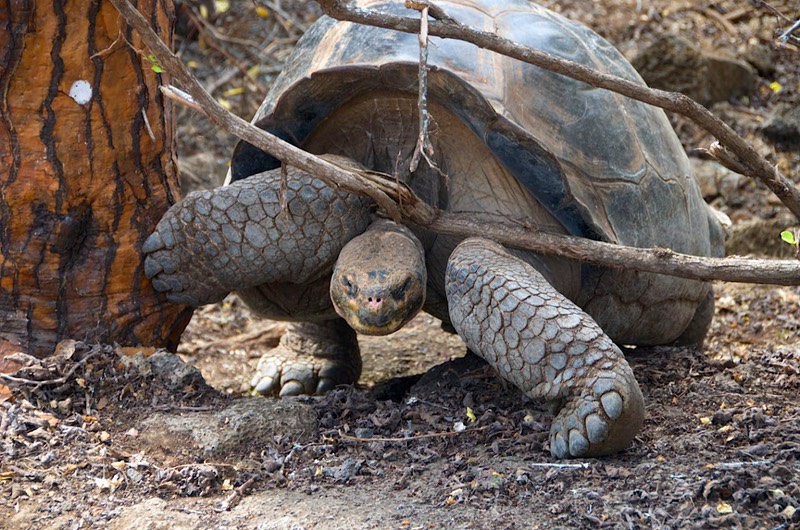
One morning, Diego came up for breakfast wearing a futbol shirt. Didn’t think anything special at the time. But later, as we had a “wet landing” i.e., climbing out of the boat into the shallow water along the shore, we realized there were more locals around than usual. It was the weekly soccer match between crews of various boats. Our guys won one and lost one, while we snorkeled, swam, and poked around in the rocks. Now we knew why Diego was getting us going at an earlier hour than usual! Angelitos rule!
Darwin Center is a highlight of anyone’s visit to the Galapagos. Most of the archipelago is part of a national park, 97% to be exact, and the Center is the park headquarters and visitor’s center. This is where they keep the land tortoises, and there are bunches of them, including Lonesome George, the last remaining of his subspecies (each island that has land tortoises has its own subspecies). It’s great to be so close to them.
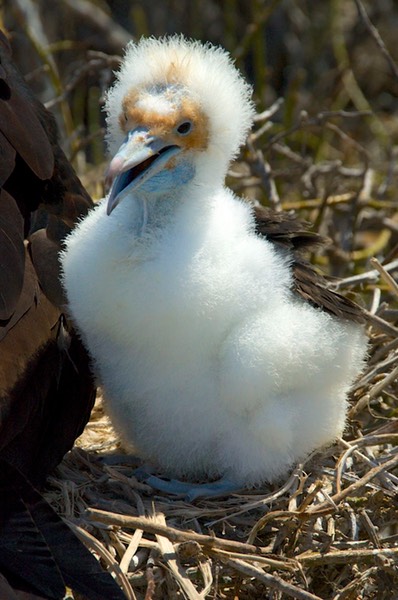
Later in the day we also had a chance to see them in “the wild” and get even closer. It seems they inhabit this guy’s farm; he doesn’t own them, they just wander around and eat the grass. Pretty special stuff. They’re huge, you know, up to about 400 pounds. You don’t just tell them to “shoo.”
By the time our week was up we had thoroughly adjusted to life at sea. I was giving thoughts to trying to sign up for cook’s helper. Rick was counting the hours until he could get to a Burger King. With lovely good-bys and promises to visit we left some very good new friends, and started our return trip to Lima and our own Tortuga. It was well worth all the hassle and expense (lots of both); wouldn’t have missed it for the world. But when we crawled into our familiar bunk in our very own Tortuga on Monday evening, we were both quite pleased to be back.
If you have any inklings of wanting to go to the Galapagos Islands, pick up the phone and make the call. You won’t regret it.
Rick and Kathy, buried in pictures.
Click the link to see more photos from the Galapagos Islands.